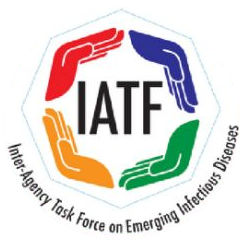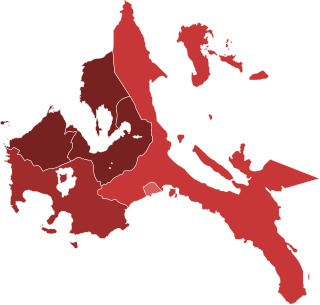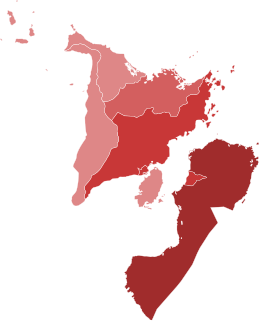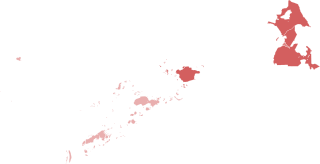
Aquilino Martin de la Llana Pimentel III, commonly known as Koko Pimentel, is a Filipino politician and lawyer currently serving as a Senator of the Philippines. He was the 28th Senate President of the Philippines from 2016 to 2018. He is also the current party president of Partido Demokratiko Pilipino–Lakas ng Bayan (PDP–Laban). As the eldest son and third child of the former Senate President Aquilino Pimentel Jr., he is the first child of a previous Senate president to hold the office. He was sworn in on August 12, 2011 and was proclaimed as the 12th winning senator in the 2007 election.

Francisco Tiongson Duque III is a Filipino physician and government official currently serving as the Secretary of Health since 2017 in the Cabinet of President Rodrigo Duterte. He also previously served as Secretary of Health from 2005 to 2010 under the administration of President Gloria Macapagal Arroyo. From 2010 to 2015, he served as the Chairman of the Civil Service Commission.

The Philippine Charity Sweepstakes Office is a government-owned and controlled corporation of the Philippines under direct supervision of the Office of the President of the Philippines. It is mandated to do fund raising and provide funds for health programs, medical assistance and services, and charities of national character. The raised collections goes to the President's Presidential Social Fund to improve the country's social welfare.
The following is a list of events affecting Philippine television in 2020. Events listed include television show debuts, finales, cancellations, and channel launches, closures and rebrandings, as well as information about controversies and carriage disputes.
2020 in the Philippines details events of note that have occurred, or are scheduled to take place, in the Philippines in the year 2020.

The ongoing pandemic of coronavirus disease 2019, a novel infectious disease caused by severe acute respiratory syndrome coronavirus 2, spread to the Philippines on January 30, 2020, when the first case of the disease was confirmed in Metro Manila. It involved a 38-year-old Chinese woman who was confined in the San Lazaro Hospital in Manila. The second case was confirmed on February 2, that of a 44-year-old Chinese man who died a day earlier, which was also the first confirmed death from the disease outside mainland China. The first case of someone without travel history abroad was confirmed on March 5, a 62-year-old male who frequented a Muslim prayer hall in San Juan, Metro Manila, raising suspicions that a community transmission of COVID-19 is already underway in the Philippines. The man's wife was confirmed to have contracted COVID-19 on March 7, which was also the first local transmission to be confirmed.

The COVID-19 pandemic was confirmed to have spread to Metro Manila, Philippines on January 30, 2020, when the first case of COVID-19 was confirmed in the City of Manila. After a month of no new cases in the country, the first case of someone without travel history abroad was confirmed on March 5, a 62-year-old male who frequented a Muslim prayer hall in San Juan, Metro Manila, raising suspicions that a community transmission of COVID-19 is already underway in the Philippines. The man's wife was confirmed to have contracted COVID-19 on March 7, which was also the first local transmission to be confirmed. Metro Manila is the worst affected region in the Philippines, where most cases are recorded. A state of calamity and community quarantine have been in place in the region since March 15.
Everybody, Sing! is an upcoming Philippine variety game show hosted by Vice Ganda, broadcast by ABS-CBN.
The coronavirus testing controversy is an ongoing controversy involving several government officials who were reported in media to have been tested for coronavirus disease 2019 (COVID-19) in the first months of the coronavirus pandemic in the Philippines. This violated the triage algorithm used by the Department of Health (DOH), which said that asymptomatic patients should not be tested, and should instead be put under 14-day house quarantine.

The Bayanihan to Heal as One Act, officially designated as Republic Act No. 11469, is a law in the Philippines that was enacted in March 2020 granting the President additional authority to combat the COVID-19 pandemic in the Philippines. The word "bayanihan" is a Tagalog word for communal work.
This article documents the timeline of the coronavirus pandemic in the Philippines.

As a measure to limit the spread of coronavirus disease 2019 (COVID-19) in the Philippines, lockdowns, officially characterized as "community quarantines" by the government, of varying strictness was imposed in numerous parts of the Philippines. The enhanced community quarantine, is the strictest of such measures. The largest of these measures was the Luzon enhanced community quarantine.

The Inter-Agency Task Force on Emerging Infectious Diseases (IATF-EID) is a task force organized by the executive of the Philippine government to respond to affairs concerning emerging infectious disease in the Philippines.

The COVID-19 coronavirus pandemic was confirmed to have spread to the Davao Region, Philippines on March 15, 2020, when the first case of coronavirus disease 2019 (COVID-19) was confirmed in Tagum. All provinces, except Davao Occidental has at least one confirmed COVID-19 case. Davao City also has reported confirmed cases. Majority of the cases and all deaths in the region are attributed to Davao City.

The COVID-19 pandemic was confirmed to have spread to Calabarzon, Philippines on March 7, 2020, when the first case of coronavirus disease 2019 (COVID-19) was confirmed in Cainta, Rizal. All provinces in the region has confirmed cases. The region is second most affected region by COVID-19 with more than 1,000 confirmed cases and at least 80 deaths.

The COVID-19 pandemic was confirmed to have spread to Central Luzon, Philippines on March 9, 2020, when the first case of coronavirus disease 2019 (COVID-19) was confirmed in San Jose del Monte, Bulacan. All provinces except Aurora has confirmed at least one COVID-19 case.

The COVID-19 coronavirus pandemic was confirmed to have spread to Western Visayas, Philippines on March 20, 2020, when the first case of coronavirus disease 2019 (COVID-19) was confirmed in Bacolod. All provinces except the island province of Guimaras has at least one confirmed COVID-19 case.

The COVID-19 pandemic was confirmed to have spread to Central Visayas, Philippines on February 5, 2020, when the first case of coronavirus disease 2019 (COVID-19) was confirmed in Tagbilaran, Bohol. There are confirmed cases in all provinces in Central Visayas except Siquijor. Most confirmed cases were recorded in Cebu with 989 cases in Cebu City alone.

The COVID-19 pandemic was confirmed to have spread to the Bangsamoro Autonomous Region in Muslim Mindanao of the Philippines on March 11, 2020, when the first case of coronavirus disease 2019 (COVID-19) was confirmed to involve a resident of Lanao del Sur. Cases has been confirmed in Lanao del Sur, Maguindanao, and the independent city of Cotabato.
The COVID-19 coronavirus pandemic was confirmed to have spread to the Bicol Region, Philippines on March 27, 2020, when the first cases of coronavirus disease 2019 (COVID-19) was confirmed in Daraga, Albay and Naga.

























